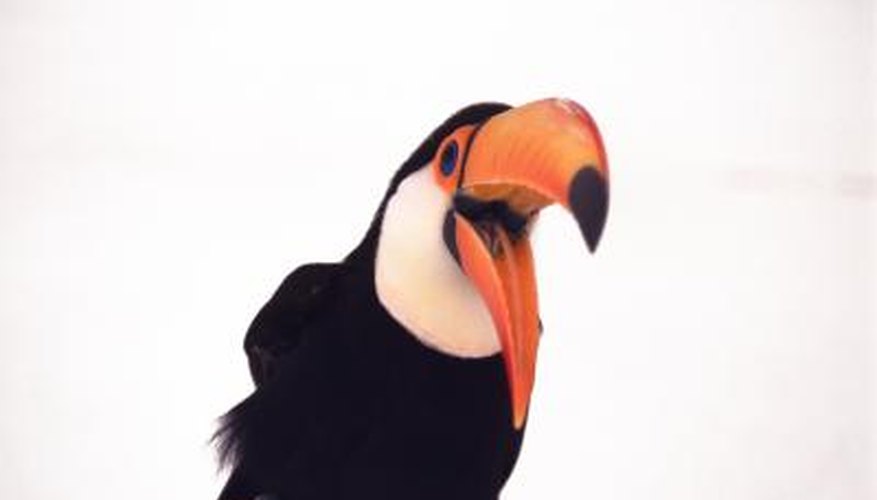Known for their large, colourful beaks, toco toucans have the largest bill to body ratio of any bird in the world. These canopy dwellers live in the neotropical regions of South and Central America, where the bulk of its diet consists of seasonal fruits. Despite the toco toucan's distinctive appearance, researchers know very little about predators and lifespan. Instead, research focuses on how these oddly-shaped birds manage to live and thrive in the wild.
Beaks
Although it appears to be a liability, the large beak helps the toco toucan grasp fruit, insects, eggs and small birds. Researchers believe the beak may attract a mate. The beak provides a means of preening feathers and defending against smaller predators. The toco toucan adjusts blood flow to the beak to regulate their body temperature through controlled heat loss, so the bird does not overheat in its tropical habitat.
- Although it appears to be a liability, the large beak helps the toco toucan grasp fruit, insects, eggs and small birds.
Toes
Because of the large beaks, relatively small bodies and shorter wings, toco toucans fly poorly. To counteract their lack of mobility, toco toucans have strong legs and toes. Of their four toes on each foot, the first and fourth are backwards, so that two toes wrap around the branches from each direction. This sure grip allows the birds to walk and hop along branches in the canopy without having to rely on their wings as much.
- Because of the large beaks, relatively small bodies and shorter wings, toco toucans fly poorly.
- This sure grip allows the birds to walk and hop along branches in the canopy without having to rely on their wings as much.
Colouration
The toco toucan beak has a black spot on orange and yellow feathers, which blend into the colours of the canopy. The black and white body provides more protection in areas where the toucans should be less visible. Toco toucans live in holes in trees, where they tuck their bright beaks under their wings and draw up their tail feathers to cover the colours. This allows the toco toucan to blend into the dark hole and potentially avoid predators.
- The toco toucan beak has a black spot on orange and yellow feathers, which blend into the colours of the canopy.
Flocks
Toco toucans typically live in small groups of six adults who travel together to find fresh sources of fruits as the seasons change or they deplete the available fruit supplies. Both parents work together to care for the eggs and raise the young for the first eight weeks. Toco toucans chatter loudly and click their beaks to communicate amongst themselves. They also use their loud croaking sounds to startle potential predators and allow the group to escape.
- Toco toucans typically live in small groups of six adults who travel together to find fresh sources of fruits as the seasons change or they deplete the available fruit supplies.
